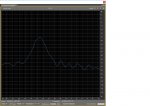So... I did what i said. I put all the Arietta Bass reeds on my concerto III reed block (It has individual holes for the reeds)
This is the measure of the Bigger reeds inside the accordion (closed all the other blocks with masking tape on the bottom):
(O = Opening the bellows, C = Closing)
A) O: -10c C: -18c
A#) O: +1c C: -12c
B) O: -12c C: -35c
C) O: -36c C: B+42 (very detuned)
C#) O: -35c C: -30c
D) O: C+48c (very detuned) C: -35c
D#) O: D+44c (very detuned) C: D +48c (Very detuned)
E) O: -15c C: -30c
F) O: -11c C: -7c
F#) O: -10c C: -17c
G) O: -12c C: -37c
G#) O: -4c C: -22c
So i will tune these ones, then the other reeds. I will use the method that Paul De Bra mentioned, correcting the difference measured here.
Thanks to everyone for the support, please wish me success!
Last question: Will the tuning change when i move the reeds from the reed block with individual holes, to the original reed block with the big hole?
This is the measure of the Bigger reeds inside the accordion (closed all the other blocks with masking tape on the bottom):
(O = Opening the bellows, C = Closing)
A) O: -10c C: -18c
A#) O: +1c C: -12c
B) O: -12c C: -35c
C) O: -36c C: B+42 (very detuned)
C#) O: -35c C: -30c
D) O: C+48c (very detuned) C: -35c
D#) O: D+44c (very detuned) C: D +48c (Very detuned)
E) O: -15c C: -30c
F) O: -11c C: -7c
F#) O: -10c C: -17c
G) O: -12c C: -37c
G#) O: -4c C: -22c
So i will tune these ones, then the other reeds. I will use the method that Paul De Bra mentioned, correcting the difference measured here.
Thanks to everyone for the support, please wish me success!
Last question: Will the tuning change when i move the reeds from the reed block with individual holes, to the original reed block with the big hole?


